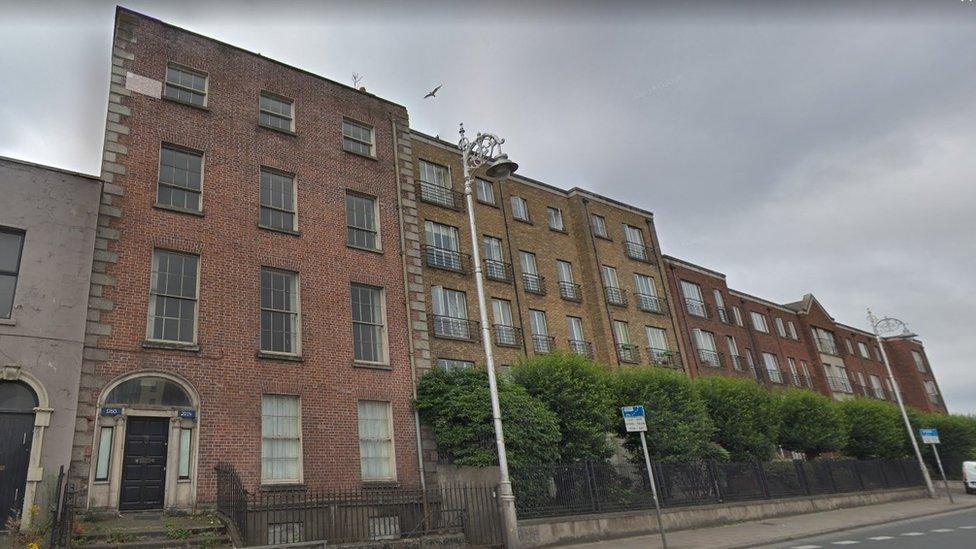Ulysses: Celebrating 100 years of a literary masterpiece
- Published
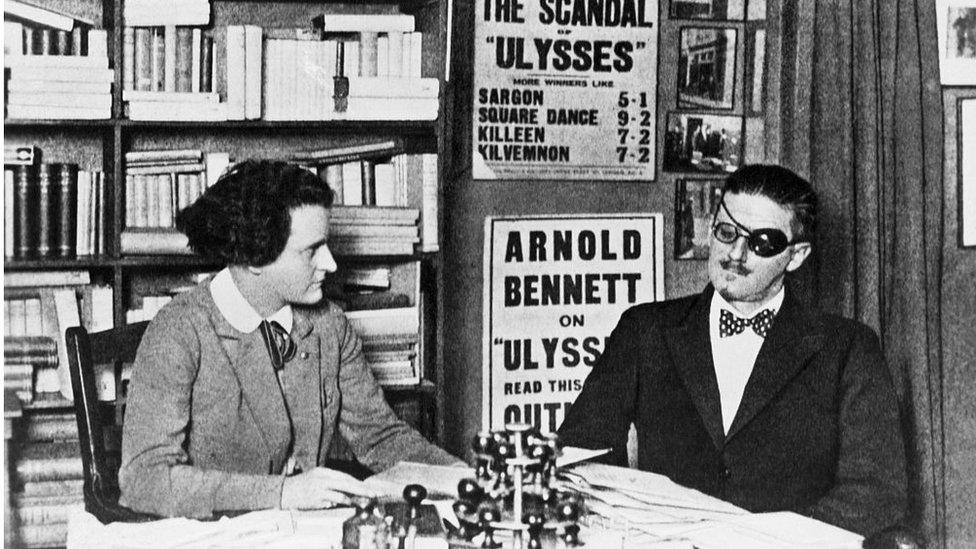
James Joyce met publisher Sylvia Beach in 1920 shortly after he moved to Paris
In the spring of 1921, Paris bookseller Sylvia Beach boasted about her plans to publish a novel she deemed a masterpiece that would be "ranked among the classics in English literature".
"Ulysses is going to make my place famous," she wrote of James Joyce's acclaimed and challenging novel, written over seven years in three cities depicting the events of a single day in Dublin.
And it did.
On 2 February 1922, Beach published the first book edition of Ulysses, just in time for Joyce's 40th birthday.
Stylistically dense in parts, it tells the stories of three central characters - Stephen Dedalus, Leopold Bloom and his wife, Molly - and is now celebrated as one of the world's most influential texts.
'Tosh'
TS Eliot, writing in 1923, believed Ulysses was "the most important expression which the present age has found", external.
But the path to publication was not a smooth one. The novel sparked controversy and was greeted with revulsion by many - even among some in the literary community.
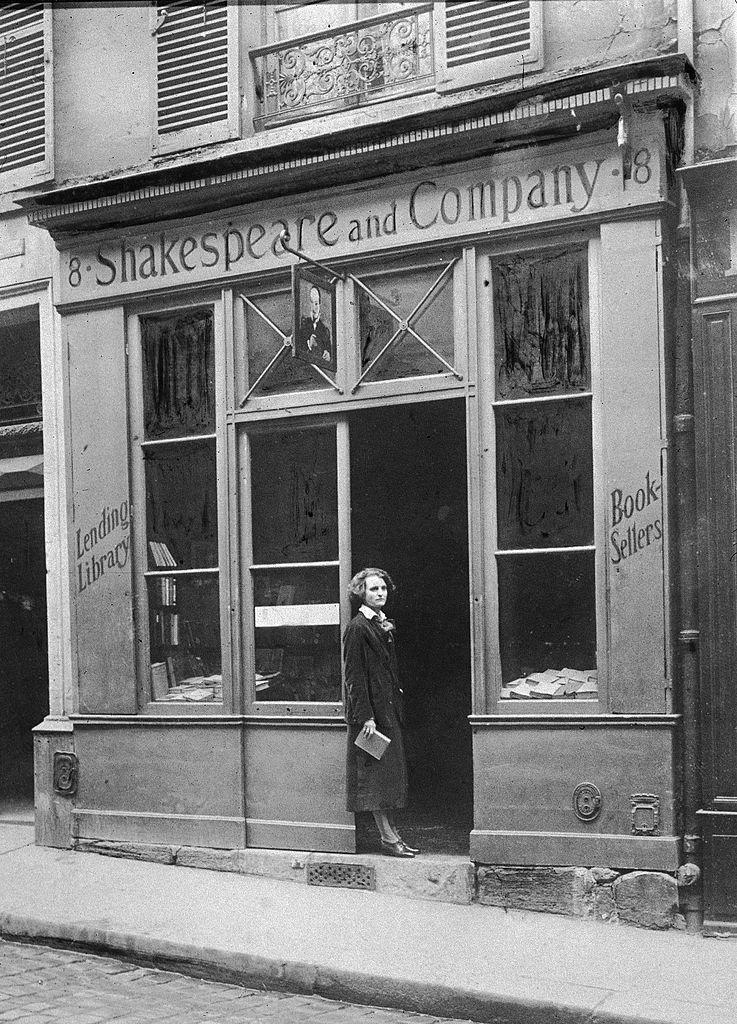
Sylvia Beach's Paris bookshop was a haven for American ex-patriates during the 1920s and 1930s
Virginia Woolf described it as "tosh", external.
Parts had been serialised by US magazine Little Review in 1920, resulting in an obscenity trial that concluded with the editors being fined and ordered to cease further publication. It was also censured, external in Great Britain.
Beach, the owner of Shakespeare & Company on the Rue Dupuytren, was determined to have it published in book form, which she did, bankrolled in part by her own money on the promise of subscribers.
Writing about the task at the time, she said she had to "put every single centime aside to pay" the book's printer.

Prof Keri Walsh, outside the modern incarnation of Shakespeare & Company, in Paris
Prof Keri Walsh, director of the Institute of Irish Studies at New York's Fordham University, says Beach's decision to publish turned her into a "culture-hero of the avant-garde".
"There was a sense that people knew that this was going to be one of the defining books of modernism, so she understood that she would assure her own place in literary history by being the publisher of it," Prof Walsh tells BBC News NI.
Ulysses: 'Don't read the criticism, read the book'
Joyce and Beach first met in 1920, not long after he moved to Paris.
He had long left Ireland in self-imposed exile, living in Trieste, Zurich and the French capital.
Beach described that meeting as a powerful moment, says Prof Walsh.
"Joyce was very tired at this point. He had spent so much time fighting to finish Ulysses, and get through [World War One] and survive, he felt she could provide some sort of stability and support for him and his family," she adds.
"She was much more than a publisher - a banker, agent, administrator, friend of the family. For a very long time that relationship worked well."
But following disputes over publishing rights, the relationship between Joyce and Beach soured and the latter ultimately ceded the novel's rights, writes Prof Walsh in The Letters of Sylvia Beach.

Sylvia Beach eventually ceded the publishing rights to Ulysses after her relationship with Joyce soured
Random House published Ulysses in 1934, external after the US ban on publication was overturned the previous year.
That marketed it to a bigger audience, but it was 20 years before writers began to "claim" Joyce, says John McCourt, professor of English at the University of Macerata in Italy.
While Joyce was deeply frustrated by the reception Ulysses had received, he was equally unrelenting, adds Prof McCourt.
"He wouldn't change a comma to make it more acceptable to whatever public taste deemed was OK.
"He saw himself becoming a cause celebre and played it for all it was worth."

Tips for reading (or attempting to read) Ulysses
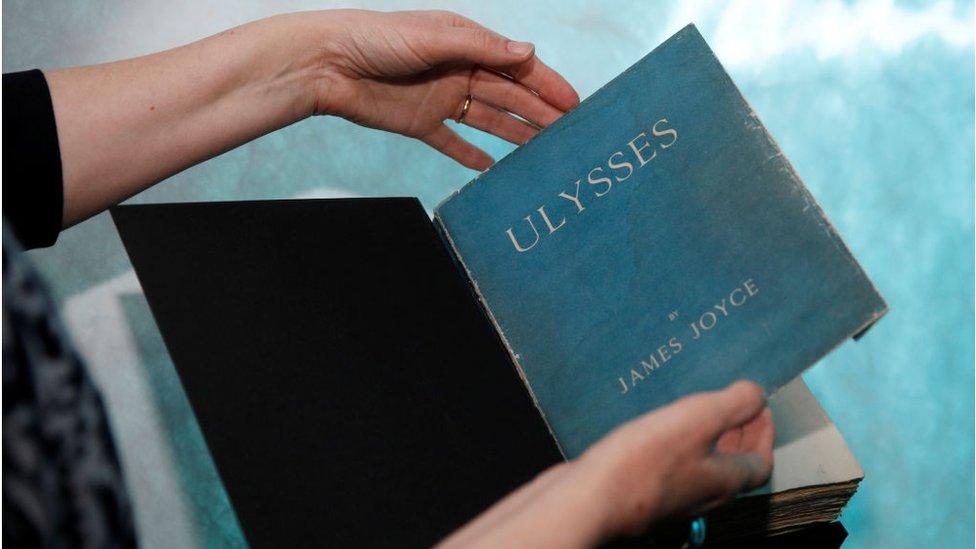
Prof John McCourt, University of Macerata, Italy
Nobody is fully prepared to read the book.
If you know something about music that would be a big help.
If you know something about Ireland and its history, that would help.
Don't try and read it too quickly. Read it out loud as it does come alive.

Dan Mulhall, Irish ambassador to the United States
I have enjoyed it the more I have delved into it.
If anyone is looking for an easy read, it is not for them.
It is challenging, it is worthwhile, because it's got huge depth to it.
If you discover that an episode is too difficult, don't be deterred and move on.
This is not a detective novel where you have to get the clues in chapter three in order to read chapter four.

Darina Gallagher, director of the James Joyce Centre, Dublin
Don't be afraid. Read Portrait of the Artist as a Young Man, as that may help you with the characters.

Prof Keri Walsh, director of the Institute of Irish Studies, Fordham University, New York
Form a reading group. It comes to life if you read it alongside others.
Read and dwell on small pieces at a time. Take it slow.

Although Ulysses had been banned in the US and UK, it never formally was in Joyce's native Ireland.
Irish authorities believed so few would read the novel, they didn't need to bar it, argues Prof McCourt.
"Joyce was the outsider looking into Ireland," he says.
"In terms of the Irish reception, it was deeply resented that from abroad he dared to criticise how things were in the Ireland of 1922, the way nationalism was and the limits of that inward looking state that was set up and was dominated by the Catholic Church."
'The safe side of distance'
Joyce had a hugely complicated relationship with the country of his birth, and vice versa.
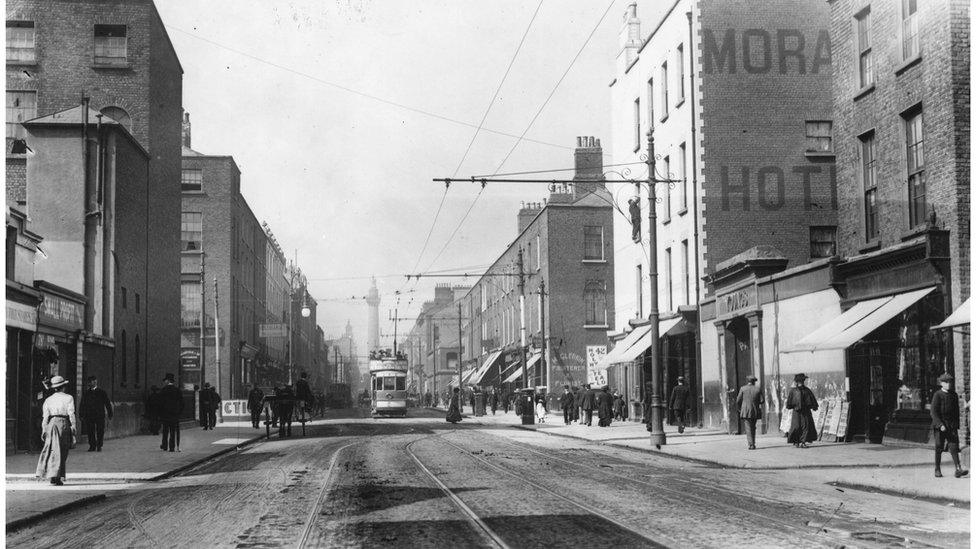
Talbot Street, Dublin, 1911. Joyce had a complicated relationship with his home city
He left in 1904 aged in his early 20s, and made four subsequent visits, but after 1912 he never again returned.
And yet his works are set in Ireland, with Dublin in many ways a character in itself.
Joyce wanted to change Ireland by changing the way the Irish saw themselves, Prof McCourt argues.
"He was hugely connected to Ireland. He knew he wasn't going to make any friends through his books, he couldn't have done it had he stayed in Ireland.
"He had to do it from what he calls in Finnegans Wake, the 'safe side of distance'."
There were some, though, who recognised Joyce's importance, says Prof McCourt.
These included Irish government minister Desmond Fitzgerald, who called on Joyce in Paris and proposed that he be nominated for the Nobel Prize for Literature.
But overall the hostility to Joyce continued right up to and including his death in 1941 in Zurich, to the extent that there was no official Irish representation at his funeral.
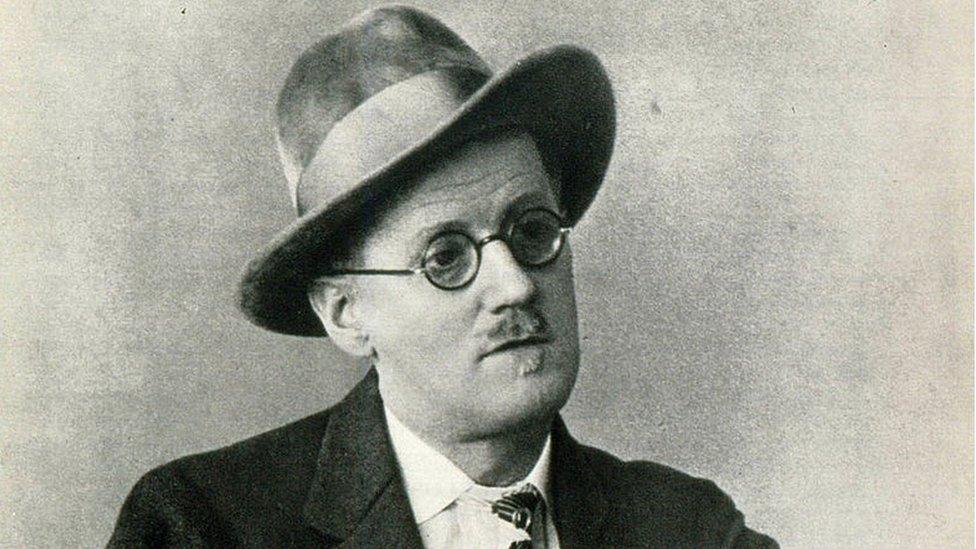
A cult following
The tide of opinion took a long time to shift.
The first Bloomsday, external - named after Leopold Bloom - celebrated in Ireland was held on 16 June 1954 (16 June 1904 is the date depicted in the novel).
At that event, fans including writers Flann O'Brien and Patrick Kavanagh visited various locations from the book.
In June 1962, the James Joyce Museum was opened by Beach in the Martello Tower in the south Dublin suburb of Sandycove.
In 1982, events were staged in the country to mark Joyce's 100th birthday.
A New York Times report, external on the day's "national celebration" reflected the change in public opinion.
"On his centenary, Dublin honors the Joyce it once scorned", its headline read.
Now, one hundred years since the publication of Ulysses, Joyce is revered, at home and abroad.
Ulysses has almost a cult following, as well as a reputation for being a challenging and at times impenetrable read.
Fans dress up in Edwardian costumes for Bloomsday each year, with Dublin at the centre of the pageantry.
There lovers of the book pay homage by going on pilgrimage to the novel's various locations, or attend readings or performances.
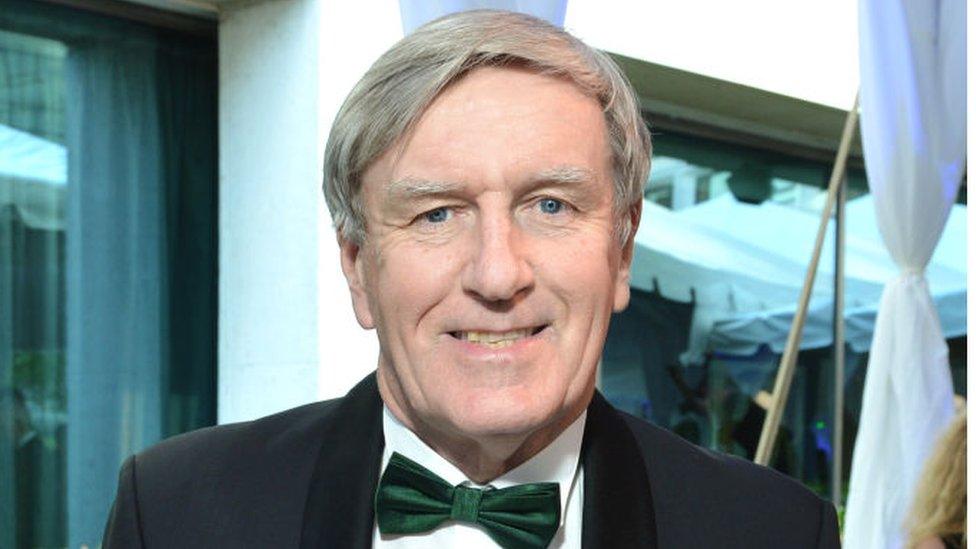
Dan Mulhall, Ireland's ambassador to the United States, says it took time for the novel's strengths to be fully appreciated
Dan Mulhall, Ireland's ambassador to the United States, has long been an advocate for promoting Ireland overseas via its long list of world-renowned writers
He wrote various blog entries, external about Ulysses on the website of Ireland's Department of Foreign Affairs after being particularly struck by a visit he made to the Rosenbach Museum in Philadelphia, which houses the original Ulysses manuscript.
Each year - except during the Covid pandemic - the museum holds a day-long public reading of the book.
"Maybe a thousand or more Philadelphians turn up to listen to readings and songs from Ulysses," Mr Mulhall, author of Ulysses: A Reader's Odyssey, tells BBC News NI.
"That made me think: 'Hey, that's something that we should be celebrating more and more.'"
'Cutting edge'
Such has been the sea change in attitudes, Prof McCourt argues that Joyce has been turned into a "consumer product, in many ways cancelling out, airbrushing out the fact that so much of what he writes about Ireland is negative".
"I don't see anything wrong with people getting dressed up, but let's not turn Joyce into something that's harmless," says Prof McCourt, the author of the upcoming Consuming Joyce: 100 Years of Ulysses in Ireland.
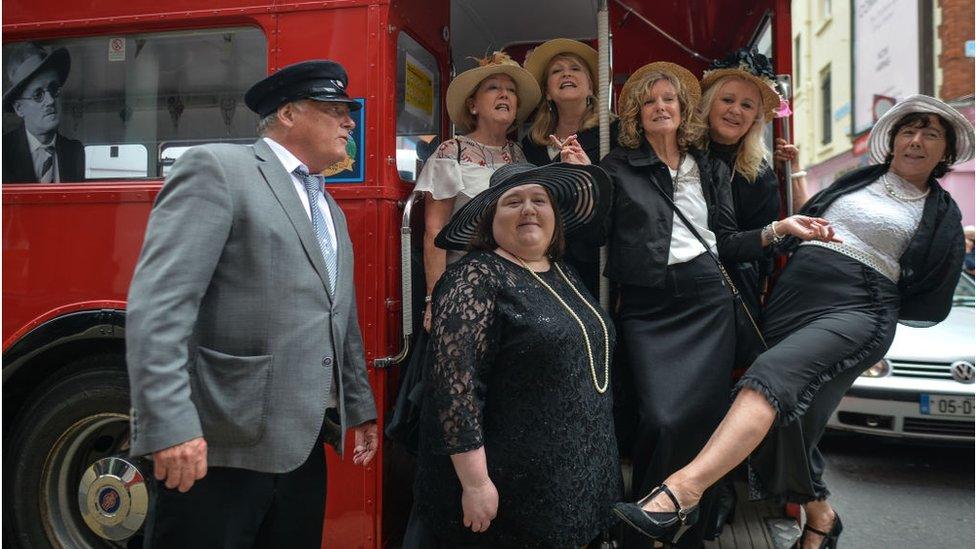
Fans of the novel dress up in Edwardian costumes for Bloomsday celebrations each year
"His book has that cutting edge. You have to find a balance. The book shouldn't be a vehicle for nostalgia of this magical Dublin of the past where everyone went round in Edwardian costume and enjoyed themselves.
"Joyce depicts a very different, and quite a poor and inward looking Dublin."
Ireland is only learning how to cope with this legacy now, some experts argue.
"It [Ulysses] wasn't really in the public domain, it was in the domain of academics, an elite. This [Ulysses] wasn't part of our canon," says Darina Gallagher, director of the James Joyce Centre in Dublin.
"We didn't really know the characters in the novel. We're only getting to know it now, getting to explore it and find legacy in it, which is kind of fascinating."
- Published19 November 2019
